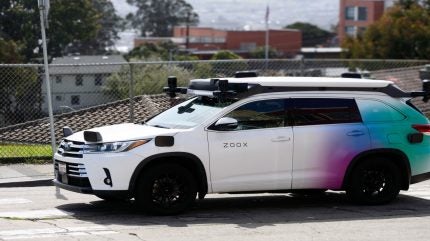
Zoox, an Amazon-backed company has inaugurated its first serial production facility for purpose-built robotaxis in the US, signalling a significant step in the company’s expansion plans.
The facility, located in Hayward, California, spans 220,000ft2 and is set to support Zoox’s growth and robotaxi services across multiple markets.

Discover B2B Marketing That Performs
Combine business intelligence and editorial excellence to reach engaged professionals across 36 leading media platforms.
The new facility represents a pivotal moment for Zoox, being the second vehicle production site in the Bay Area.
It complements the existing Fremont facility, which now focuses on the assembly of the Zoox testing fleet and sensor pod configuration.
At full capacity, the Hayward site can assemble over 10,000 robotaxis annually, with production numbers set to align with the commercial service’s demand.
The Hayward facility is a hub for various operations, including robotaxi engineering, software and hardware integration, assembly, component storage, and shipping.

US Tariffs are shifting - will you react or anticipate?
Don’t let policy changes catch you off guard. Stay proactive with real-time data and expert analysis.
By GlobalDataIt also houses the essential end-of-line testing before the robotaxis are deployed. This state-of-the-art facility not only showcases Zoox’s values but also fosters close collaboration between engineers and other teams due to its proximity to the Foster City headquarters.
Zoox’s approach to owning, operating, and assembling its robotaxis provides the company with comprehensive oversight of the entire production process.
This control allows Zoox to adjust production based on market demand and expansion plans.
The facility’s design and equipment are future-proof, ready to accommodate advances in robotaxi design.
Despite the focus on autonomous robots, the human workforce remains integral to the manufacturing process at Zoox.
Robots perform precision tasks, such as applying adhesive for glass installation, while the rest of the assembly is carried out manually.
The facility is expected to create hundreds of jobs in the San Francisco Bay Area, with roles for operators, logistics personnel, and assembly specialists set to increase as the operation scales up.






